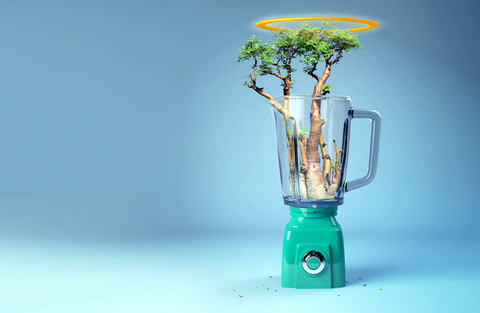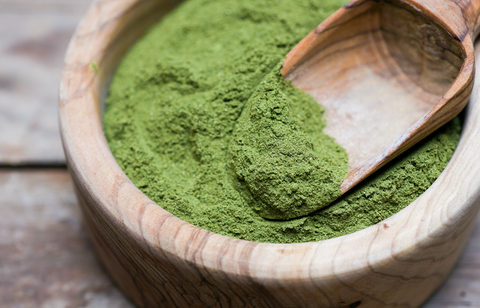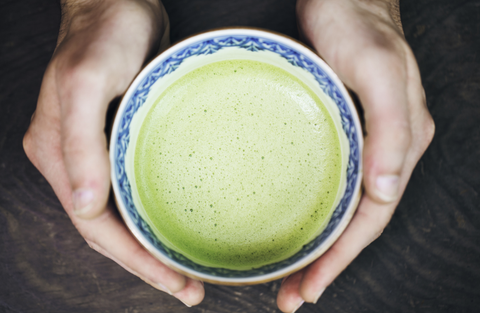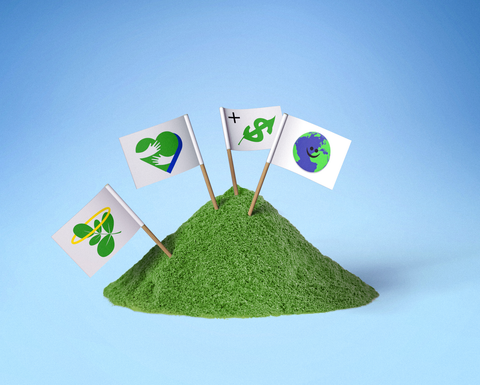“Moringa Oleifera. Have you ever heard of that?” Mehmet Oz, M.D., asked his TV audience in 2012. “Moringa oleifera comes from the Himalayas! And there’s a tree in the northwest part of India, where this grows, that has been used for many, many centuries there, for the very reason that you feel you’re being sapped, which is that you don’t have enough energy.”
Dr. Oz and a guest stand behind a table covered in supplement jars and featuring a sign: reenergize your life. He presents her with a cup of moringa tea. It shimmers yellowish green in the glass cup. She sips and grimaces. She does not look reenergized.
Seven years after that episode, health-conscious consumers can find moringa everywhere from Whole Foods to Walmart and in teas, powders, and capsules.
There are moringa snack bars, moringa energy shots, and even moringa snack puffs (gluten-free!). Its purported benefits include lowering blood pressure and blood sugar, fighting cancer, and even protecting against arsenic toxicity.
Moringa products come emblazoned with all the standard buzzwords—“organic,” “pure,” “raw,” “vegan,” “non-GMO”—and often advertise that they’re better for you than kale.

Getty Images
The taste? Well, a smoothie does a good job of masking what would otherwise be tough to swallow, a bit like grass clippings and wet earth. Still, the global market value of moringa supplement products will grow by nearly 10 percent by 2022, according to research from Technavio.
The global supplement market hit $132.8 billion in 2016, and though moringa is a small portion of that, its growth is indicative of what it takes to stand out in a crowded field. To understand the rise of moringa, you have to look beyond flavor and at how, like so many acais and chia seeds and so-called superfoods before it, it has moved from obscure food to billion-dollar business. That means going way back to when the marketing of moringa all started.
Step 1: Seed the Exotic Origin Story
In 2010, a Peace Corps volunteer named Lisa Curtis was living in Niger and subsisting on a diet of rice and millet. After a few months, she began to feel weak. That’s when some villagers told her about a local plant that natives of the Sudan in Africa had called shagarat al rauwãq: “the clarifier tree.”

Delcan & Co.
Every part of the plant is edible, and it is drought resistant, making it a reliable source of calories. Its leaves are high in protein, vitamins, and minerals, adequate amounts of which are vital in areas with limited food. That plant, moringa, could create miracles.
Within days of adding moringa to her diet, Curtis says, she felt her lethargy lift, and she grew fascinated by the plant’s potential to help people. Curtis returned to the States in 2011, and with three business partners launched an Indiegogo campaign to crowdfund a company called Kuli Kuli.
With three moringa snack-bar products, she and her cofounders touted its possible uses with lists like “10 Reasons to Eat Moringa Every Day,” which included preventing and managing diabetes, supporting cardiovascular health, and treating asthma symptoms. (To their credit, they also offered the standard superfood equivocations: has the “potential” to treat, “has been recognized as a powerful tool,” etc.)
Curtis had the good luck to launch Kuli Kuli at a time of explosive growth in the superfood and supplement business. Over the past five years, the number of vitamin and supplement businesses has increased by 3.4 percent—not a small figure considering that the 2018 U. S. market brought in $31 billion, according to a report by market-research firm IBIS World. An aging baby-boomer generation, determined to preserve good health, may explain why.

Getty Images
Even the word superfood has become more widespread. In 2015 alone, the number of new food and drink products labeled as superfoods, superfruits, or supergrains increased 36 percent globally, according to Mintel, and in true American style, the U. S. led “super” product launches.
The provenance and promises of moringa have put it on many of the same shelves as acai berries from Central and South America, goji berries from China, and maca from Peru.
“Superfood implies something exotic,” says Paul Zullo, the managing director at Silver Creative, a branding company that works frequently with food, beverage, and nutrition products. “It’s probably something from Egypt or South America, grown somewhere unusual. You don’t get superfoods from Kansas.”
They all make use of the same formula: an ingredient from a foreign land that helps natives achieve miraculous health, and that may in fact do the same for you.
Step 2: Sprinkle the Magic Pixie Dust
It’s easy to see the marketing appeal of a purifying tree. But no one shopping for moringa powder is likely to ever use the plant in the way that led to its nickname.
That’s because the people who coined the whole miracle-tree thing weren’t powdering leaves and sprinkling them into smoothies. They had a more urgent concern: drinking water.
Powdered moringa seeds, not leaves, are good for purifying H20 but not much else, though many manufacturers push moringa supplements as a way to help you “detox.” If human beings didn’t have their own miracle organ capable of handling toxins, then moringa would surely be a miracle cure. But you do have such an organ—your liver.

Getty Images
Ask Curtis about the powers of moringa and she’ll direct you to research on the company’s website. “There are three main reasons that people become excited about moringa: nutrient density, plant protein, and anti-inflammatory benefits.”
Kevin Klatt, Ph.D., a nutritional biochemist at Cornell, has conducted nutrient analysis on moringa to assess its potential as a supplement to help malnourished people.
Klatt reviewed the Kuli Kuli website and its “10 Reasons to Eat Moringa Every Day.” He concluded that most of those reasons were highly speculative and often based on small studies in journals of dubious quality. One of the larger studies, published in The Bioscan, showed that moringa oleifera could treat hypoglycemia. However, the journalistic integrity of The Bioscan was questioned in a 2014 report by Serbian researchers.
What’s more, many of moringa’s supposed benefits might also be attributable to less exotic, less expensive plants.
Klatt observed that moringa’s fans point to a specific kind of disease-fighting antioxidant (called isothiocyanates) as a reason to love the plant—but isothiocyanates are common compounds found in more mundane cruciferous vegetables such as cauliflower and mustard greens.
So how did moringa oleifera infiltrate some of the largest stores in America? Through high-profile advocates such as Dr. Oz, yes, but also through more subtle marketing tactics.
Take, for instance, a 2018 Washington Post article titled “Moringa, the Next Superfood?” It seems legit: Written by a University of California, Davis science writer, the story quotes researchers from her university who gush about how the plant can delay diabetes and “feed the world.”
As science watchdog HealthNewsReviews.org pointed out, though, the piece is actually a paid advertorial, designed to look similar to a Washington Post news article. Not only that, it failed to disclose at the time that one of the scientists cited was a paid consultant for Kuli Kuli.
Nutrition experts like Klatt have pushed back on the rhetoric of superfoods. “I am not a fan of the word superfood,” Klatt says.“It leads to people buying perceived ‘exotic’ foods and supplements even though consuming a nutritionally adequate diet is possible by buying foods at the supermarket.”
Dietitians stress that overall dietary patterns are the key to good health, and that superfoods provide few, if any, added benefits to an already healthy diet.
Facing this consensus on healthy eating that emphasizes whole foods, superfood supplements are now appealing to consumers with a higher cause.
Step 3: Grow the Halo Effect
It’s not enough for some superfood companies to want to change your health. They want to change the planet, too.

Delcan & Co.
Kuli Kuli advertises: “Nourishing You, Nourishing the World.” Natierra-brand goji berries (motto: “Superfoods with Soul”) advertise “Buy One Bag, Feed One Child.”
Alexander Chernev, Ph.D., a professor of marketing at Northwestern’s Kellogg School of Management, explains that you’re likely to see a purchase as valuable in two different ways. “For example, say that I buy a bottle of Ethos water,”he says, referring to the Starbucks subsidiary that contributes 5 cents of every purchase to its Ethos Clean Water Fund.
“One reason is that I want to reward the company for its good behavior. The other reason is not to reward the company but because I feel some sort of moral satisfaction and self-affirmation. I believe I am a socially responsible person.”
In all of this, there’s a whiff of the ancient magic—consuming something with a good soul to fortify your own, like eating deer to become swifter. And with superfoods, the ritual of consumption happens twice: once when you buy the product and again when you eat it. “Food and medicine are particularly sensitive products because you ingest them,” says T. Bettina Cornwell, Ph.D., head of the University of Oregon’s marketing department.
There also may be a feedback effect between doing good and feeling good, thanks to a well-established psychological phenomenon called the halo effect.
In various contexts, researchers have shown that a person’s overall impression of a product influences the perception of specific, unrelated qualities. For example: High-priced wines taste better when the drinker is aware of the price.
With co-investigator Sean Blair, Chernev studied the effect of perceived corporate responsibility on product evaluations and found that altruism functions like high price. When consumers were told a company was engaged in charitable giving, their experience of the company’s product improved: Wine tasted better, teeth looked whiter, hair looked thicker, a scanned image looked crisper.
The problem, though, is that this new generation of superfoods, like the first, remains bound up with shaky scientific claims.
Cornwell emphasized to me that consumers are self-interested, which means they may pay a premium for a morally good product if they also believe it benefits them.
In the case of moringa, the nutritive benefits are unequivocal, but only for people in areas that struggle with malnutrition. When it comes to your average guy shopping at Whole Foods, the science doesn’t scream “miracle.”
After interviewing Lisa Curtis, I became convinced that at Kuli Kuli, the mission is sincere. Yes, the products are overpriced based on their nutritional value for consumers, but there is no reason to doubt the company’s claim that it has generated $1.2 million in revenue for more than 1,365 moringa farmers in Africa. These actions encourage consumers to think globally about sustainability.
At the same time, you should acknowledge the appeal of superfoods for what it is, and always has been: the promise of an easy solution to deep anxieties. In truth there is no powder that can heal your woes, nutrition-related or otherwise. You can’t buy your way to being a good person, no matter how sincere the mission of the companies you’re buying from.
So applaud the new superfoods, insofar as they indicate a change in what we value—a focus on helping the world in addition to ourselves. But also remember that making good on those values, like leading a healthy life, will take much more than a little powder in your smoothies.
Source: Read Full Article
